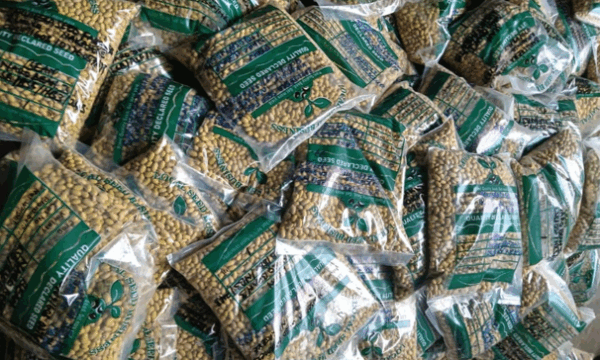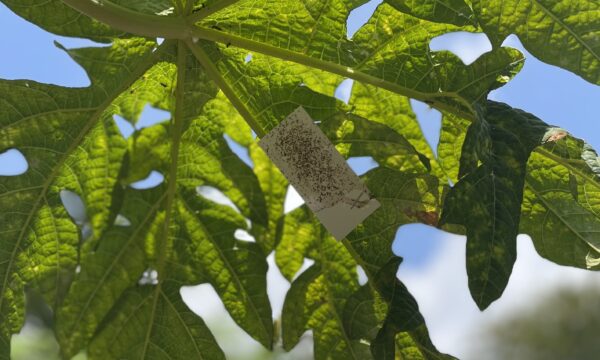Certain maize landraces obtained from South America have been found to have developed sophisticated defence strategies to cope with insect pests such as the spotted stemborer, Chilo partellus, it was reported today. These findings could help to increase maize yields and improve food security.

Parasitized spotted stemborer caterpillar. Note cocoon of the parasitic wasp Cotesia flavipes. © D. Cugala, Stemborer team, icipe
The spotted stemborer, Chilo partellus, is now a major pest in eastern and southern Africa, as well as South Asia where it causes yield losses of up to 88%. Since establishing in east Africa in the 1950s, it has spread to southern and central Africa. The distribution map on Plantwise.org shows the current distribution in Africa and South Asia.
The larvae tunnel extensively into stems and maize cobs causing weaknesses that may lead to stems breaking. They can also cause damage known as “dead heart”; this is when larvae crawl inside the sheath and tunnel into the heart of young shoots, killing the growing point, which leads to browning and wilting of the youngest leaves.
Research published today will help to develop methods for controlling insect pests, specifically C. partellus, in maize crops. A team of scientists from Africa and the UK has discovered certain maize landraces that have developed specific defences against C. partellus. When the pest has laid its eggs the plants begin to produce and release chemical attractants, called herbivore induced plant volatiles (HIPVs), into the air. These HIPVs were detected by parasitic wasps that were then attracted to the plant. When they arrived they killed the stemborer eggs and caterpillars without damaging the maize plant.
The findings were the result of a collaboration between Kenya-based International Centre of Insect Physiology and Ecology (icipe) and UK-based Rothamsted Research. The team suggests that the release of HIPVs may have become lost in commercial hybrid maize varieties through conventional crop breeding. If we were to utilise the natural plant defences in the commercial production of maize then farmers would be able to reduce crop losses caused by this insect pest.
This natural pest control mechanism could also lead to large reductions in the use of insecticides by smallholder farmers in East Africa (the immediate targets of this work). Insecticides cause environmental damage and their overuse can cause insecticide-resistant strains of pests to emerge, as has been seen with the over-application of pyrethroids to control bed bugs.
Prof. Maurice Maloney, Director of Rothamsted Research, stated “The work shows that there is enormous genetic potential in landraces of staple crops and that this aspect of biodiversity can be harnessed beneficially to increase yields in the most needy geographies”.
As Prof. Maloney suggested, this is a significant breakthrough in protecting crops from pests, which will hopefully be able to reduce crop losses in areas requiring improved food security.
2 Comments
Leave a Reply
Related News & Blogs
How does crop rotation help keep pest populations in control?
Crop rotation is a simple, effective way to manage pests, improve soil health, and boost yields. Suitable for all growers, crop rotation supports sustainable agriculture and reduces the need for chemical inputs. By targeting pest lifecycles and reducin…
6 June 2025





[…] Maize’s New Protector: Parasitic Wasps (plantwise.org) Rate this: Share this:FacebookLinkedInTwitterEmailDiggRedditStumbleUponPrintLike this:LikeBe the first to like this post. Agriculture, Global Warming, Bhutan globalwarming, Pemagatshel District, Punakha, New Delhi, Maize, International Rice Research Institute […]
[…] Maize’s New Protector: Parasitic Wasps (plantwise.org) […]